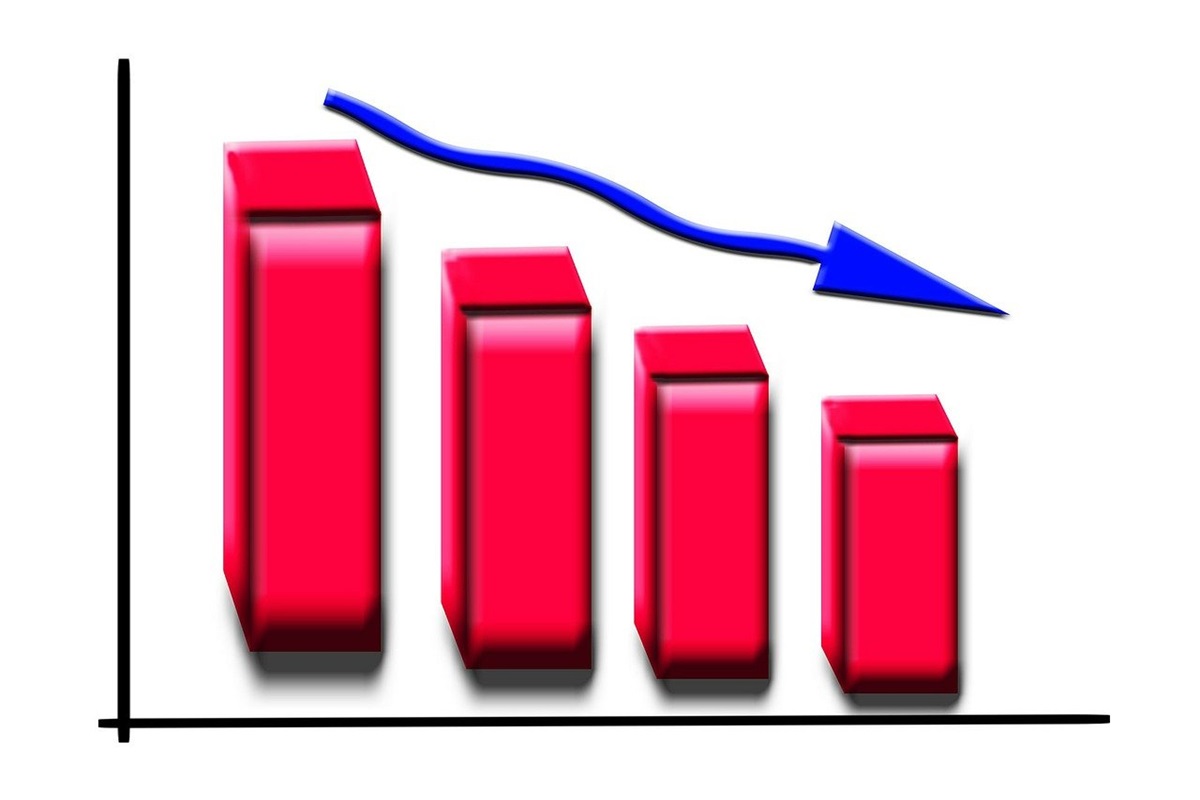In the United States, retail sales showed a decline in January, which turned out to be the largest in almost two years.

The mentioned dynamic is evidence of an abrupt pullback by consumers after the rapid growth of spending in the last months of 2024.
The value of retail purchases, not adjusted for inflation, decreased 0.9% in the United States in January. The relevant information was published by the US Commerce Department on Friday, February 14th. The December upward revised value of retail purchases showed a gain of 0.7%.
Nine of the report’s 13 categories posted declines, which were seen most strongly in motor vehicles, sports goods, and furniture stores. It is worth noting separately that these data cover the period during which devastating wildfires occurred in Los Angeles, the second-largest metropolitan area in the United States. The mentioned period also includes severe winter weather in other US regions. The relevant circumstances could hurt brick-and-mortar shopping activity.
Treasury yields showed a decline after the release of data on the dynamic of retail sales in the United States in January. The dollar remained lower.
Also on Friday, information was published according to which industrial production in the United States showed growth in January, which exceeded forecasts for the dynamics of this indicator. The factor impacting the result that exceeded expectations was utility usage during the month, marked by a lower air temperature. At the same time, a sharp decline in motor vehicle output restrained manufacturing.
On Friday, Federal Reserve data showed that production at factories, mines, and utilities increased by 0.5% in January in the United States. A month earlier, a revised 1% gain was recorded. The average forecast of economists surveyed by the media predicted that in January in the United States, the mentioned indicator would show an increase of 0.3%.
Manufacturing output, which accounts for three-fourths of total industrial production, fell 0.1% in the US last month. In this case, the impact factor was the weakest auto production in three months.
Output at utilities in the United States showed an increase of 7.2% in January. It is worth noting that this indicator is the highest in the last three years. At the same time, mining in the United States fell by 1.2% in January.
Manufacturing, which accounts for three-fourths of total industrial production, has recently shown signs of stabilization. The corresponding tendency is observed against the background of resilient consumer spending and firm, but uneven business investment.
Currently, manufacturers are facing several headwinds in the United States. In this context, it is worth mentioning the strengthening of the dollar, which makes the products of US companies more expensive for foreign consumers. There is also currently a high risk that the main burden of retaliatory tariffs against the United States will affect local producers. In this case, it implies economic countermeasures on the part of world capitals as part of a response to Washington’s tightening trade policy, implemented in the form of tariffs on goods imported to the US.
The Fed data shows that the January dip in factory output also reflected a decline in the making of plastic and rubber products, printing, and food. At the same time, production in the aerospace industry showed growth for the second month in a row. With a high degree of probability, in this case, the impact of Boeing Co. is observed after the resolution of a machinists’ strike months ago.
By market group, the production of business equipment in the United States showed an increase of 2.1% in January. This indicator partially reflects the largest gain in output of information processing gear since July. The production of consumer goods in the United States in January was the highest in the last five months. This dynamic was led by non-durable goods.
The Fed data also shows that capacity utilization at factories, a measure of potential output being used, fell to 76.3% in the United States last month. The overall industrial utilization rate rose to 77.8%.
Currently, manufacturers in the United States are signaling that the industry is emerging from malaise. The Institute for Supply Management’s latest measure of factory activity in January showed growth for the first time since 2022. In this case, factors such as ramp-up of orders and accelerated production were sources of impact.
Returning to the topic of retail sales in the United States, it is worth noting that the high level of relevant indicators in the last months of 2024 helped the country’s economic system maintain significant growth rates. It is worth noting that in this case, it implies a kind of traditional intensification of consumer activity during the holiday season.
The January slowdown in sales growth in some categories of goods may indicate that other factors besides fires and snowstorms could have affected the dynamic of the corresponding indicator. In the relevant context, it is worth noting separately that in the United States, consumers still continue to face stubborn inflation. Also, within the framework of the current configuration of reality in the space of the US economic system, the high cost of borrowing is a sensitive impact factor for them. Moreover, in the United States currently, many consumers are turning to credit cards and other debt to support their spending. At the same time, the number of those loans that are starting to go bad is increasing.
Delinquency is becoming more common in the United States. The relevant situation, which demonstrates gradual scaling as a kind of economic phenomenon, is related to the fact that borrowers have been facing elevated interest rates for the third year now. This week, Fed Chairman Jerome Powell once again stated that the central bank of the United States does not intend to rush to lower borrowing costs. The corresponding position of the US financial regulator has strengthened after a significant increase in consumer prices was recorded in January. Moreover, the central bank of the United States intends to wait for the first consequences of the implementation of the economic strategy of the administration of President Donald Trump to be observed. Only after that, apparently, the Fed intends to decide on the further dynamic of monetary policy. Officials at the central bank of the United States, at the same time, acknowledge that acting too quickly or too slowly on interest rates can have negative implications.
Wells Fargo & Co. economists Tim Quinlan and Shannon Grein said in a note that despite the fact that households continue to take on more and more debt, the sector as a whole is in good financial shape, and income growth continues to support a decent pace of increased consumption in the current year.
The looming tariffs of the Donald Trump administration on a variety of goods from several countries may eventually trickle down to consumers. Oliver Allen, senior US economist at Pantheon Macroeconomics, said that the mentioned state of affairs in recent months has already caused some to start to stockpile big-ticket items. At the same time, the expert noted that the corresponding momentum is weakening, as evidenced by the January decline in sales of furniture, electronics, appliances, and sports goods. Oliver Allen also stated that the pulling forward sales in anticipation of the imposing of new tariffs was probably the reason that consumer spending exceeded the underlying trend at the end of 2024, but set the stage for a subsequent drop below this trend.
Tariffs could potentially distort retail sales in the future. Since the aforementioned measures are not adjusted for inflation, an advance could merely reflect higher prices rather than greater sales activity.
It is worth noting that many experts have warned that Washington’s tightening tariff policy could have negative consequences for the United States’ economic system. According to them, the implementation of the specified measures carries a significant risk of accelerating inflation, which in recent years has become a factor of very sensitive impact on the financial situation of consumers.
It is worth mentioning that the tariffs that were imposed during the first presidential term of Donald Trump, which lasted from 2017 to 2021, began to drag on the growth of the US economy even before the coronavirus pandemic. The probability that the corresponding experience will be repeated is far from minimal.
Data released on Friday showed that the so-called control-group sales which feed into the government’s calculation of goods spending for gross domestic product (GDP) in January in the United States fell by 0.8%. This indicator has been the most since March 2023. It is worth noting that the specified figure does not include food services, auto dealers, building materials stores, and gasoline stations.
Cold weather and a pullback in spending triggered a January drop in retail sales in the United States. At the same time, these factors of impact do not allow experts to form a full understanding of the prospects for the continuation of the situation observed last month. Cold weather and a pullback in consumer spending after the holiday season are temporary circumstances. At the same time, the current economic situation in the United States is not so favorable that the mentioned occasions are the only existing and potential factors of the downward impact. Consumers continue to face elevated inflation and uncertainty about the effects of Washington’s tightening trade policy. Against the mentioned background, it is impossible to predict unequivocally what consumer activity in the United States will be in February and the following months. In this case, a favorable scenario and a negative probability have virtually the same degree of realism in terms of the prospects for materialization in the space of the US economic system.
It is also worth noting separately that the retail report largely reflects purchases of goods, which comprise a relatively narrow share of overall consumer outlays. Data on personal consumption expenditures, which will be published before the end of the current month, will provide more details about inflation-adjusted spending on goods and services in January.
Spending at restaurants and bars, the only service-sector category in Friday’s report, increased by about 1% in the United States last month.
Robert Frick, corporate economist with Navy Federal Credit Union, said that the January drop in retail sales in the US was dramatic, but several mitigating factors show that there is no cause for alarm. According to the expert, the downward dynamic can partly be explained by bad weather and a decline in auto sales after an unusual increase in December due to incentive measures for dealers. Besides, Robert Frick noted that especially considering December was revised up strongly, the rolling average of consumer spending remains solid. Over time, it will become known to what extent this optimism is consistent with reality.









